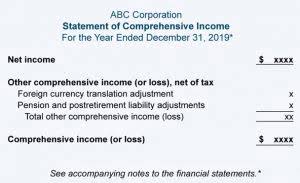The purpose of closing entries is to prepare the temporary accounts for the next accounting period. The income summary is used to transfer the balances of temporary accounts to retained earnings, which is a permanent account on the balance sheet. Closing entries transfer the balances of temporary accounts to an equity account.
Transfer Net Income or Loss
In summary, permanent accounts hold balances that persist from one period to another. In contrast, temporary accounts capture transactions and activities for a specific period and require resetting to zero with closing entries. As mentioned, temporary accounts in the general ledger consist of income statement accounts such as sales or expense accounts. When the income statement is published at the end of the year, the balances of these accounts are transferred to the income summary, which is also a temporary account.
- The balance sheet is also adjusted to reflect the updated equity position.
- They would have already served their purpose at the end of that period which is the reason why they are closed and their balances are reduced to zero.
- This net result is then carried over to the balance sheet, updating the retained earnings and providing a comprehensive view of the company’s financial position.
- There is no future benefit or utility from income-expenditure accounts.
- This follows the rule that credits are used to record increases in owners’ equity and debits are used to record decreases.
How To Do Closing Entries: Explanation with Examples
When a new accounting period begins, these accounts will retain their balances from the previous period. The owner’s drawing account will be zero and the owner’s Accounting for Technology Companies drawing account will be closed by crediting the owner’s drawing account and debiting the capital account. If there is a net loss, the income summary account is also closed, with the income summary account being credited and the capital account being debited. If there is a net profit, the balance of the income summary account is also zeroed by debiting the income summary account and crediting the capital account. At the end of the accounting period, all revenue account balances must be closed out to begin the new period with a zero balance. This is done by transferring the total revenue earned during the period into the Income Summary account, which temporarily holds all income before calculating net results.
How Can Enerpize Boost Your Business As Payment Management Software?
Any dividends declared during the period are transferred to the retained earnings account, reducing the balance in retained earnings by the amount of dividends paid out. This step ensures that the retained earnings account reflects the net effect of both the company’s earnings and the distributions made to shareholders. By completing this process, businesses can start the new accounting period with zero balances in their temporary accounts, ready to record the financial activities of the new period. At the end of an accounting period, closing entries are made to transfer the balances of temporary accounts—revenues, expenses, and dividends or withdrawals—into permanent accounts.
These accounts carry their ending balances into the next accounting period and are not reset to zero. This process ensures that your temporary accounts are properly closed out sequentially, and the relevant balances are transferred to the income summary and ultimately to the retained earnings account. For example, closing an income summary involves transferring its balance to retained earnings. This crucial step ensures that financial unearned revenue records are accurate and up-to-date for the next period, making it easier to track the company’s performance over time.
- After closing entries are completed, the post-closing trial balance serves as a verification tool to confirm that all ledger accounts are balanced and prepared for the new accounting period.
- If there is a net loss, the income summary account is also closed, with the income summary account being credited and the capital account being debited.
- Closing entries are journal entries required to close all nominal or temporary accounts at the end of a financial or accounting period or year.
- Its Cash Management module automates bank integration, global visibility, cash positioning, target balances, and reconciliation—streamlining end-to-end treasury operations.
- A closing entry is a journal entry made at the end of an accounting period.
Order to Cash
- Understand the significance of closing entries in financial reporting and their impact on accurate financial statements.
- This comparability is essential for stakeholders, including investors, creditors, and management, who rely on consistent and accurate financial information to make decisions.
- This ensures that the income earned and expenses incurred so far pertains only to that period and does not include cumulative data from previous periods.
- The main purpose of these closing entries is to bring the temporary journal account balances to zero for the next accounting period, which keeps the accounts reconciled.
- The income-expenditure account of the business organization is related to the corresponding accounting period.
- Companies usually create closing entries directly from the ledger’s adjusted balances.
The purpose of closing the books is to prepare the ledger accounts for recording the transactions of the next period. Reducing the balance of the temporary accounts to zero will allow a fresh start for those accounts whenever a new period begins. This way, there will be a separation of income and expense accounts between the current period and the previous ones. Closing Entries are journal entries that are recorded for the purpose of closing all temporary accounts and transferring their balances to permanent accounts. Closing entries clear the balances in temporary accounts such as revenues, expenses, and dividends, resetting them to zero.
They’d record declarations by debiting Dividends Payable and crediting Dividends. If this is the case, then this temporary dividends account needs to be closed at the end of the period to the capital account, Retained Earnings. To close the drawing account to the capital account, we credit the drawing account and debit the capital account. Temporary account balances can be shifted directly to the retained earnings account or an one purpose of closing entries is to intermediate account known as the income summary account. Close the income summary account by debiting income summary and crediting retained earnings.








